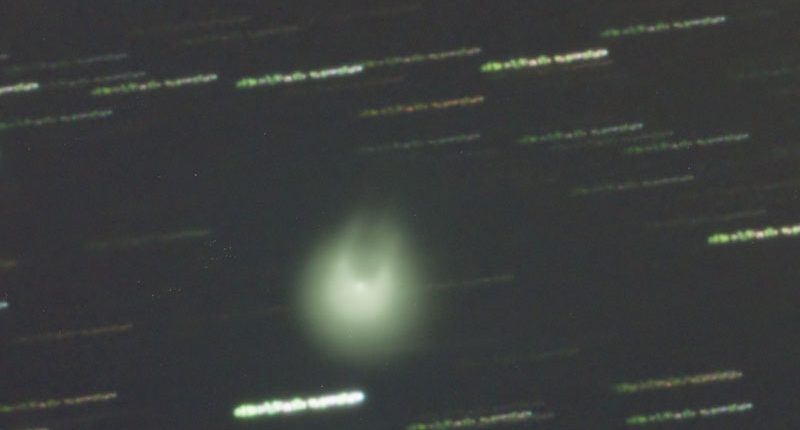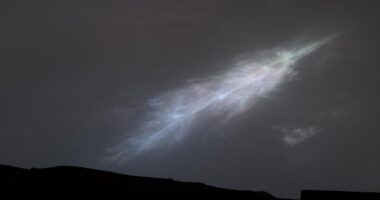A GIANT green comet is visible in the sky right now over the Northern Hemisphere.
Budding astronomers will need to be quick to see it though before it vanishes for another 71 years.
The comet is known as the Mother of Dragons and also 12P/Pons-Brooks.
It received its Mother of Dragons nickname as ESA researchers think it’s the parent body of the kappa-Draconids meteor shower.
The comet was pictured in 2023 with what looked like a pair of horns attached.
Although the comet no longer appears to have horns, it is now visible for the first time since 1954.
It’s also been referred to as explosive due to its volatile activity.
It’s known for its flare-ups, which scientists have linked to “cryovolcanism” – meaning it may be one of a handful of comets with active ice volcanoes.
These flare-ups may release a “cryomagma”, which is a cold blend of gas and hydrocarbons.
The comet is about 10.5 miles and easy to spot if you know where to look.
Most read in Science
HOW TO SEE COMET 12P/PONS-BROOKS
The comet is now thought to be bright enough to view with the naked eye.
Astronomers still recommend using binoculars or even a small telescope to get the best view of the comet.
You’ll need to look just above the horizon facing to the west-northwest.
The comet should appear north of the Great Square of Pegasus constellation.
Try doing this after sunset or during the total solar eclipse on April 8 if you happen to be in the path of totality in North America.
The comet will make its closest approach to the Sun on April 21.
That means April 21 will be the best chance to see it as the space rock will be at its brightest in the sky.
Its closest approach to Earth will occur in June but the comet will no longer be visible in the Northern Hemisphere by then.
What’s the difference between an asteroid, meteor and comet?
Here’s what you need to know, according to Nasa…
- Asteroid: An asteroid is a small rocky body that orbits the Sun. Most are found in the asteroid belt (between Mars and Jupiter) but they can be found anywhere (including in a path that can impact Earth)
- Meteoroid: When two asteroids hit each other, the small chunks that break off are called meteoroids
- Meteor: If a meteoroid enters the Earth’s atmosphere, it begins to vapourise and then becomes a meteor. On Earth, it’ll look like a streak of light in the sky, because the rock is burning up
- Meteorite: If a meteoroid doesn’t vapourise completely and survives the trip through Earth’s atmosphere, it can land on the Earth. At that point, it becomes a meteorite
- Comet: Like asteroids, a comet orbits the Sun. However rather than being made mostly of rock, a comet contains lots of ice and gas, which can result in amazing tails forming behind them (thanks to the ice and dust vaporizing)











